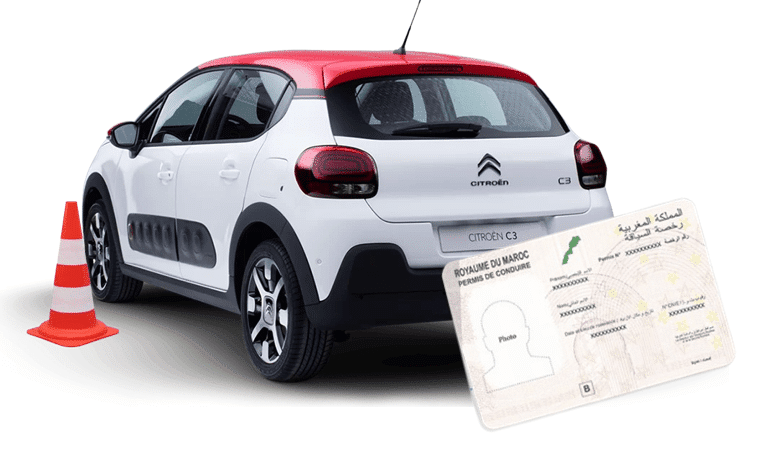Complete Guide to Obtaining Your Class B License in Morocco
admin
- admin
- June 3, 2025
- 9:25 am
- 2 Comments

Getting your driver's license in Morocco is more than just a piece of paper; it's a gateway to freedom, independence, and new opportunities. Whether you're a student, a young professional, or simply eager to get behind the wheel, the process can seem complex. Don't panic! At autoecoles.ma, we have prepared this complete and detailed guide to accompany you, step by step, towards obtaining your precious B License in Morocco.
Step 1: Prerequisites and Initial Formalities
Before even thinking about getting into a car, a few conditions must be met:
- Minimum Age: For License B (light vehicles), you must be at least 18 years old.
- Physical and Mental Ability: A medical examination is required to certify your ability to drive. It is generally carried out by a licensed physician and is an essential part of your file.
- Required Documents: Prepare a complete file which generally includes:
- A copy of your CIN (National Identity Card).
- Recent passport photos that meet standards.
- A medical certificate of fitness to drive.
- The driving license application form (provided by the driving school).
- Proof of address (sometimes requested).
Step 2: Choosing Your Driving School – A Crucial Decision
It's one of the pillars of your success. A good driving school isn't just a place to learn; it's an essential partner.
- Reputation and Experience: Find out about the school's reputation, the quality of its instructors, and the success rate of its students.
- Premises and Equipment: Comfortable classrooms and recent, well-maintained vehicles are assets.
- Flexibility and Monitoring: A driving school that offers flexible hours and personalized support (such as autoecoles.ma ) will make all the difference.
- CONTRACT : Make sure the contract is clear about the services included (code lessons, driving lessons, exam fees, etc.).
read this article : How to choose the right driving school in Morocco?
Step 3: Preparation and Examination of the Highway Code (Theoretical)
This is the first major test, and it requires solid preparation.
- Theoretical Courses: Attending the Highway Code classes provided by your driving school is essential. This is where you'll learn the rules, signs, priorities, and all the specifics of the Moroccan Highway Code.
- Intensive Training: Practice multiple sets of questions (available online, on apps, or through your driving school). This is the best way to memorize and understand the logic of the questions.
- The Code Review: It usually takes place at an approved center. You'll answer a series of questions on a computer. The threshold for success is high, which is why it's important to avoid the common mistakes we've already covered on our blog!
- Pro tip: Don't rush. Read each question and answer option carefully.
Step 4: Driving Lessons and Practical Test
Once you have the Code, it’s time to practice!
- Driving Hours: The minimum number of hours is set by law, but the goal is to acquire sufficient vehicle control and a good understanding of the road. Your instructor will adapt the program to your progress.
- Learning Maneuvers: Parking, reversing in a straight line, turning around... These specific maneuvers will be practiced until they become a reflex.
- Driving in Traffic: Your instructor will guide you through various situations (city, road, roundabouts, intersections) to help you get used to Moroccan traffic.
- The Practical Exam: This is the culmination of your training. It takes place in two phases: a technical inspection (questions about the vehicle) and a road test, where you will have to demonstrate your autonomy, safety, and compliance with the Highway Code. An inspector evaluates your performance.
Step 5: After the Exam – Waiting and Getting the License
The big day has passed, and the wait for the results begins.
- Results : They are usually communicated within a few days. If successful, congratulations!
- Provisional Permit: A provisional certificate may be issued to you while your permanent license is being processed. This allows you to drive legally.
- Final License: A few weeks later, you can collect your biometric driver's license card from the National Road Safety Agency (NARSA) or the relevant authority, often through your driving school. Keep it safe!
- If unsuccessful: Don't get discouraged! Failure is part of the learning process. Analyze your weaknesses with your driving school, retake a few driving lessons if necessary, and present yourself with more confidence.
Additional Tips for New Drivers in Morocco
Congratulations, you now have your Class B driving license! But the learning doesn't stop there.
- Prudence : The first few months are crucial. Drive carefully, obey speed limits, and be especially vigilant.
- Accompanied Driving (if applicable): If you have had the opportunity to drive accompanied, continue to take advantage of it.
- Formation Continue : Do not hesitate to take additional training if you feel you have gaps (for example, driving on the motorway, driving at night).
- Compliance with the Code: The Highway Code is your ally for everyone's safety.
Obtaining a Class B license in Morocco is a process that requires commitment, perseverance, and quality training. By following the steps in this guide and choosing professional support like that offered by autoecoles.ma In Fez (or your city), you'll have every chance of succeeding and becoming a safe and independent driver. Don't hesitate to contact us with any questions or to begin your training!